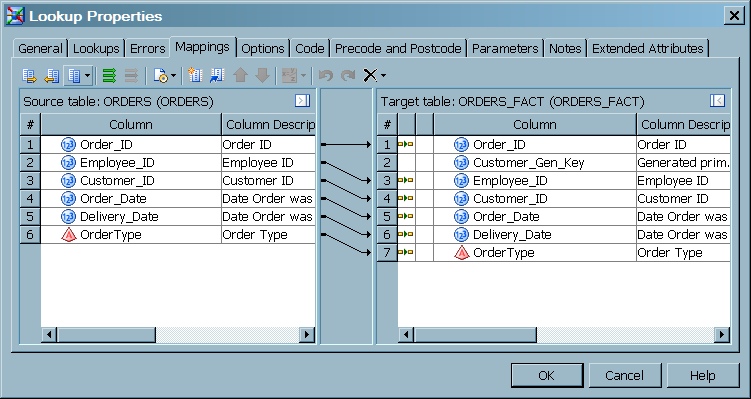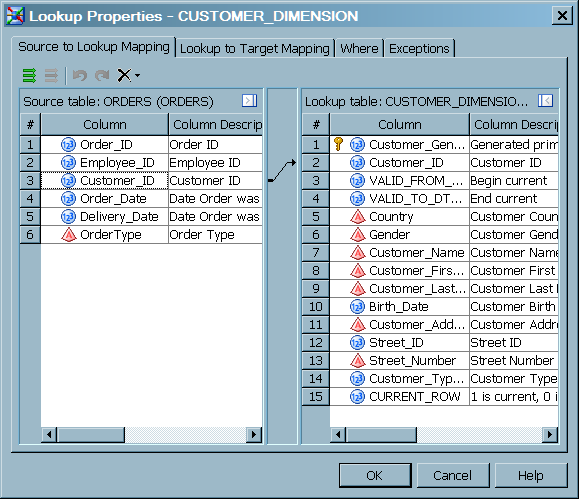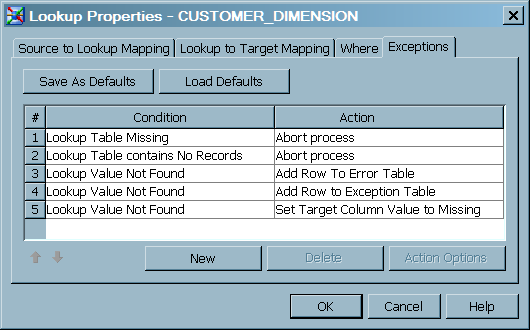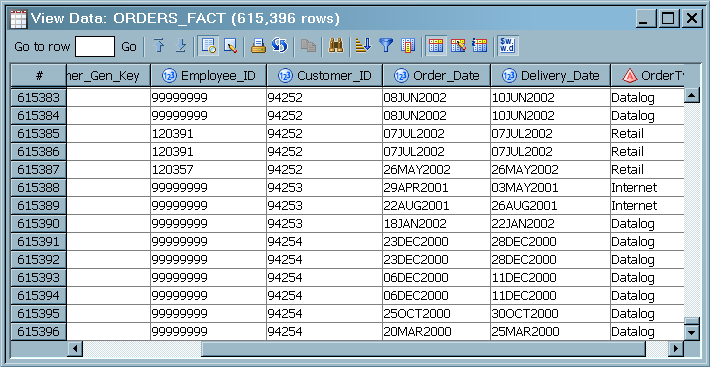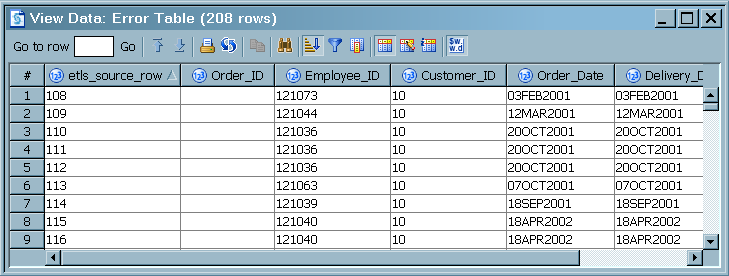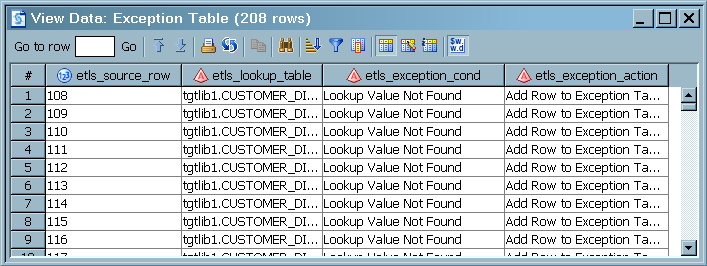Loading a Fact Table Using Dimension Table Lookup
Solution
You can
create a job that uses the Lookup transformation, which loads fact
data from a source table and uses a lookup process to load foreign
keys from the dimension table.
The lookup
process compares the business key in each source row to the business
keys in the dimension table. When the business keys match, the foreign
key from the dimension table is loaded into the fact table target.
Tasks
Create and Populate the Job
-
Because you want to store the output of the transformation in a permanent target table, right-click the temporary work table that is attached to the transformation and select Replace. Then, use the Table Selector window to select the target table for the job. The target table must be registered in SAS Data Integration Studio. (For more information about temporary work tables, see Working with Default Temporary Output Tables.)
Map Key Columns between the Source and Lookup Tables
Perform
the following steps to define the conditions under which values from
a lookup table are loaded into the target.
-
Use the Source to Lookup Mapping tab to specify the source and lookup columns that are compared at run time. If values match, then the lookup value is added to the target. If a match is not found, then an exception condition exists.In the sample job, the business key in the source is compared to the business key in the lookup table, which in this case is a dimension table that contains customer information. To map the columns, click the Customer_ID column in the Source Table list. Then right-click the Customer_ID column in the Lookup Table list, and select Map Selected. A mapping arrow appears between the two columns. The following display depicts the completed Source to Lookup Mapping tab.
-
If you want to define a WHERE clause that further refines the match between the business key columns, click the Where tab and build an expression. Click Apply to save changes.Note: If you use a WHERE clause, and if the lookup table uses a generated key, you can improve performance by creating an index on the generated key column, as described in About Generated Keys.
Map Lookup Columns Into the Target
Perform
the following steps to map lookup columns into the target. Values
are loaded when keys match between the source table and lookup table.
In the sample job, the target receives lookup table key values. In
the target, the key values connect the factual events (orders) to
detail data (customer information).

